The visually whimsical illustrations of Katrina Roberts, where humans and animals exchange bodies and inanimate objects take on a life of their own, belie a deeper existential resonance and poetic intertextuality within their simplicity. Art Editor Morgan Fox interviewed Katrina on the nature of her artwork.
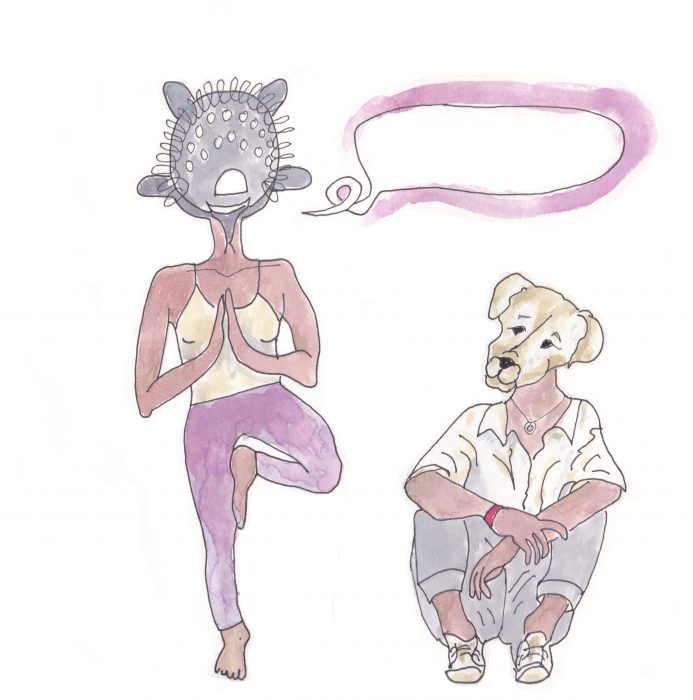
Morgan Fox: Could you talk a little bit about your process? This feels a little like a “the chicken or the egg” question, but do you find that you start from the illustrations or from the poetry?
Katrina Roberts: Sometimes walking or riding you catch the shard of a life, a world sparked in a gesture like a grain lodging itself in your eye to chafe and rock and churn, snowballing to spring forth when least expected as a pearl. Graphic depictions and verbal texts together exist in drawn lines minds read and see simultaneously, yet narrative via chains of words, holds within it time unfolding for an intellect to translate and process, while appeals of the aesthetic — color, form, proximity, iteration – are visceral. Simultaneity is a mantra. Both the egg and the chicken, yes.
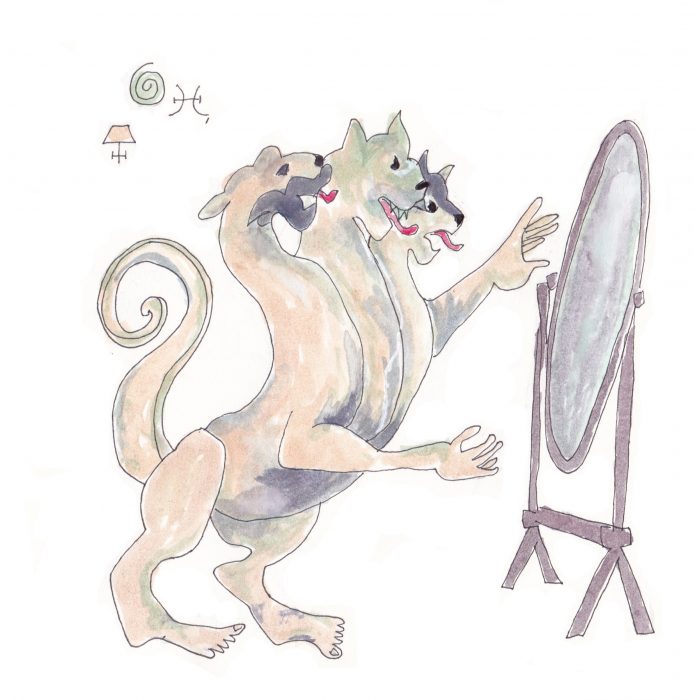
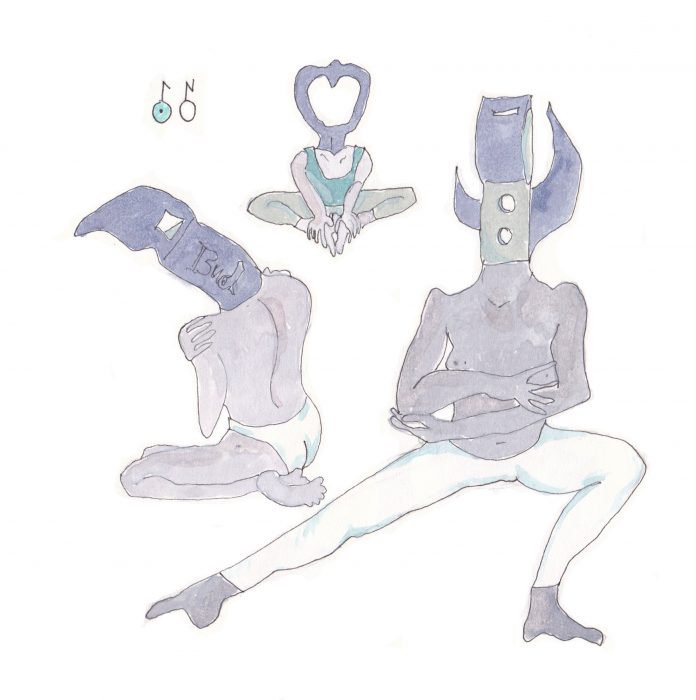
MF: Something that really struck us in your work was both the textual and visual puns, and I think my favorite in this is the churchkeys doing yoga. This might go back to the last question a bit, but how much inspiration comes from this interplay?
KR: Puns have to do at once with pounds, ponds, and punctilios; the garment they wear is multiplicity’s robe. I thought I was someone who couldn’t appreciate them, but then my hand brushed an electric fence encircling horses I was feeding one morning! Circuitry’s immediate sting gives way to prolonged ache. The arcing humor of puns harbors something dark, intimate, ironic. Verbal/visual interplay is key, as is music. Angles, and amplitude, a few attributes I admire.
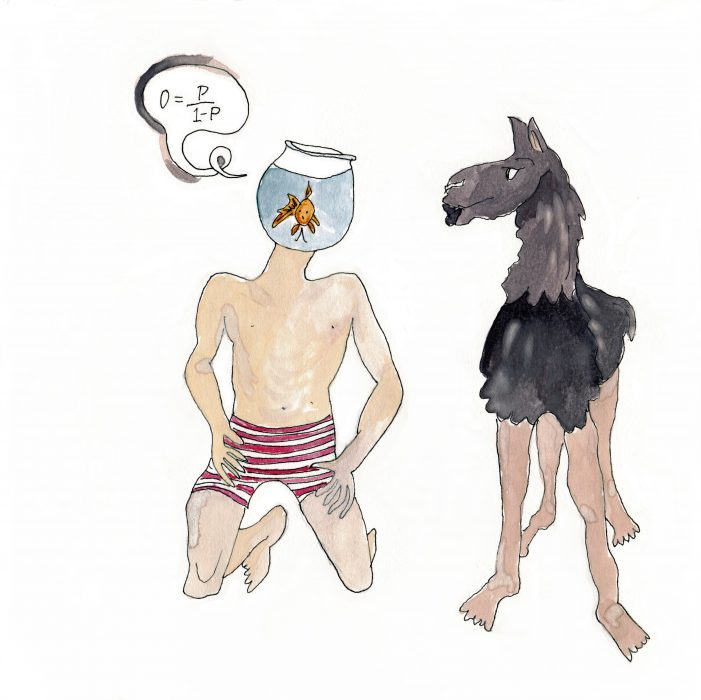
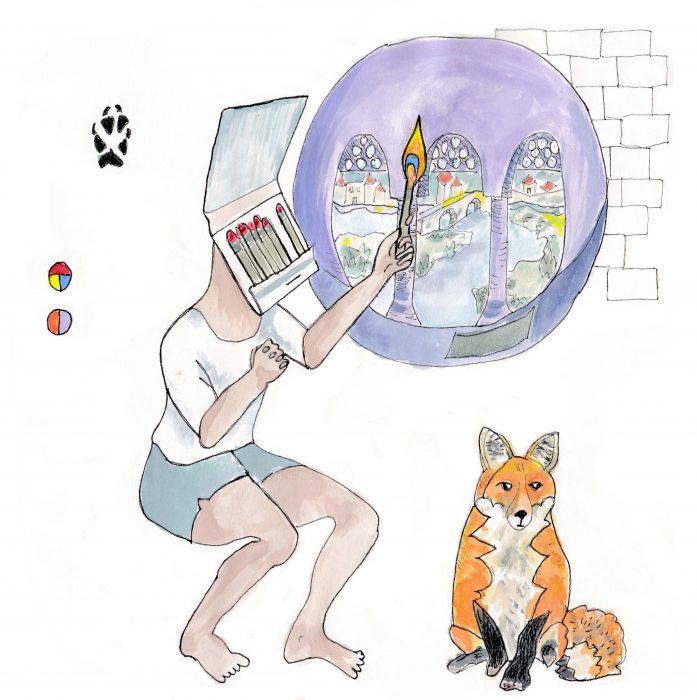
MF: There are also so many cultural references. Cerberus, Prometheus, Emily Dickinson, even the Oscars to name a few here. Do you find yourself drawn to a particular canon?
KR: … in so far as the canon is musical and each approximation overlaps like rings across a lake with all that’s preceded it. I’m struck by visual rhyme, palimpsests, the fugue, its threads interweaving, cohering into song even as its strains stream to flee. In Likeness, the manuscript from which these are drawn, ekphrasis of classical gestures, “formal” metaphor, informs my exploration of bodies within space, as do constraints of ancient tangrams; the work’s in dialogue with the history of visual art, among other things. Principles, patterns, passions; how we inhabit, iterate, appropriate, as well as defy; how we reject and pay homage… “Once upon a time,” sets something familiar in motion; I’m curious about collective beliefs, icons, mythologies, dreams, pop culture, yet also quotidian moments that quietly throttle and shake wonder back into me.
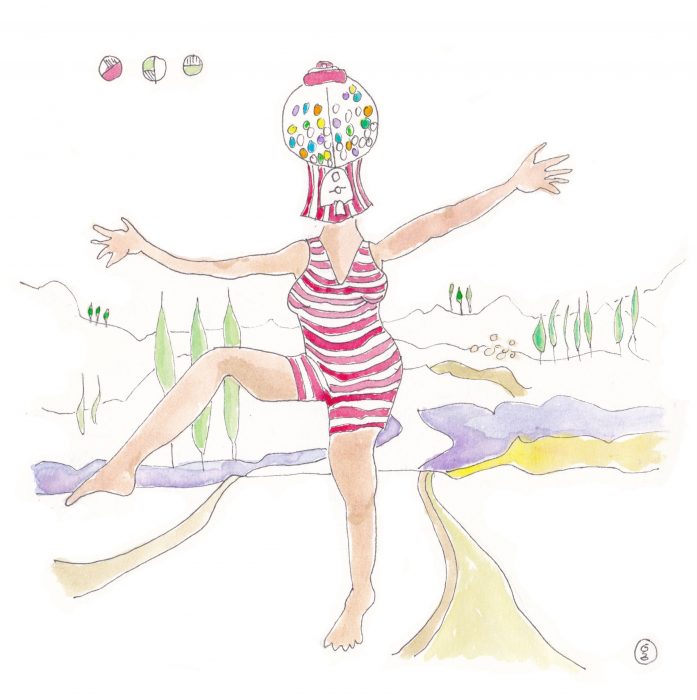
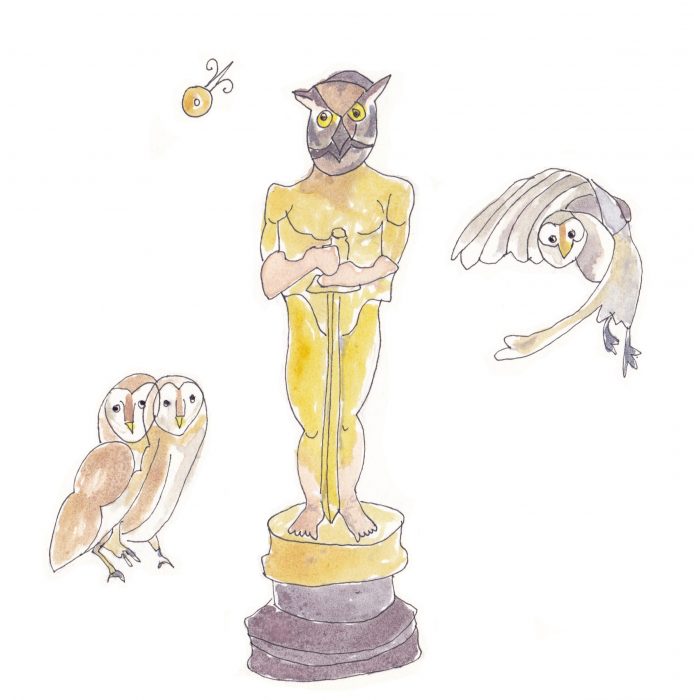
MF: There always seems to be an element that ties your illustrations together into a series. Here I’m thinking of the orbs and symbols that appear across several of the pieces, or the Tangrams series. Outside of that, do you find that there’s an underlying narrative to your work? Or, perhaps, have you considered doing work with sustained narrative?
KR: Poetry comics or graphic poems in sequence chase into thickety forests, narrative skirting the undergrowth, diving deep; they may tell stories via juxtaposition, or litany’s cinematic accumulation. If glimpse is the grain, sustained vision might spin a single stalk to sheafs then gold; I love thinking that unspools, and gathers, knitting me in. Goethe’s red thread. Identity, resemblance, analogue; story builds as “round” to counter human breakage, revealing a journey through illness, injury, maternity, sobriety, society, sorrow, and time. But yes, I’m working on more traditional sustained narrative in visual essays at the moment, too, and invested in graphic novel work, memoir, and cartoons that convey story explicitly.
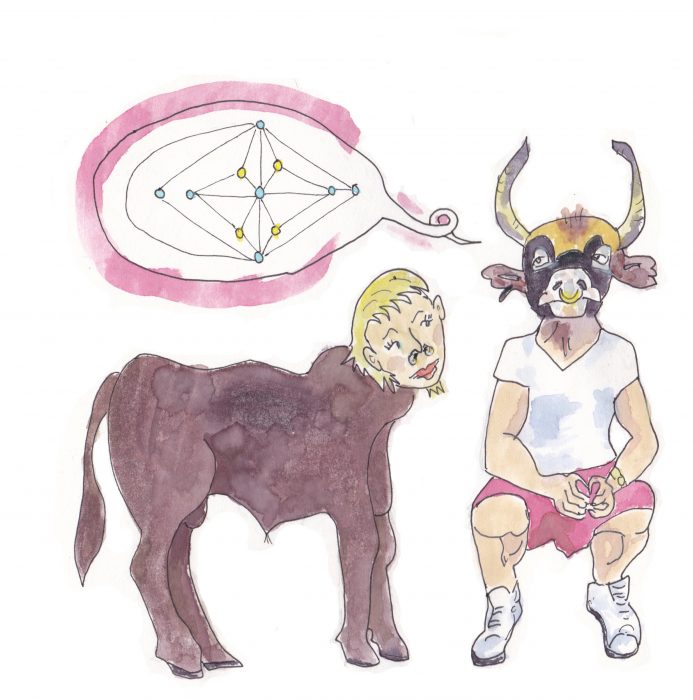
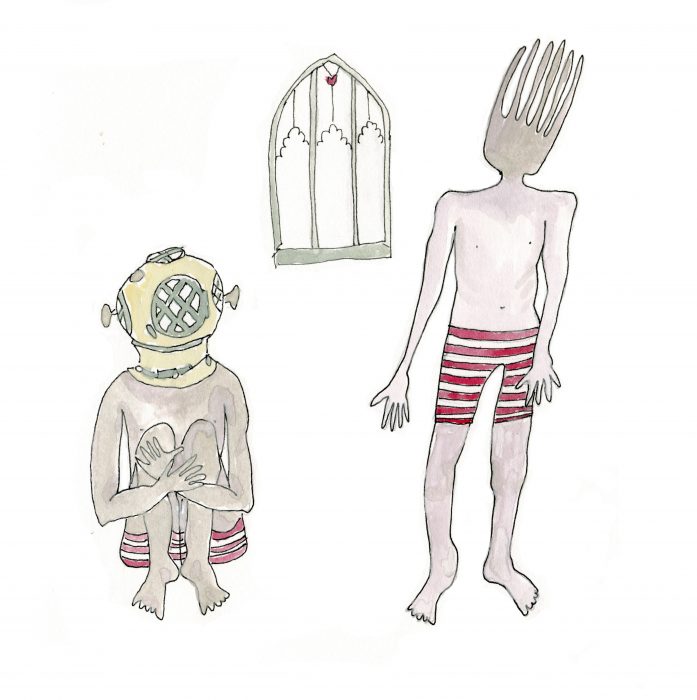
MF: I’m also really intrigued by this “facelessness,” or the mingling of animate/inanimate and human/animal and how that shapes rather than obscures identity. Could you talk a little bit about that impulse, or what fascinates you about these mixings?
KR: Hybridity/multiplicity is my experience of embodiment. Disrupting presumption about identity creates possibility. Yes to animal, mineral, and vegetable. I’m fascinated by interfaces between the organic, emotional, cultural, mechanical; by conjunctions of spirit and material, color and shadow, the pragmatic and fanciful. Kami and Tsukumogami resonate. Machines, pictograms, the rationality of math, all intrigue me; the history of science inspires endlessly. Wonder, invention, attentiveness, reclamation, respect, and practices for co-existence are priorities, especially in this time of environmental intensity. There’s sanctuary and power in the delicate pursuit of linework, in epistolary and poetic story, in beauty and bewilderment rendered through intentional, elemental confrontation, as well as chance.
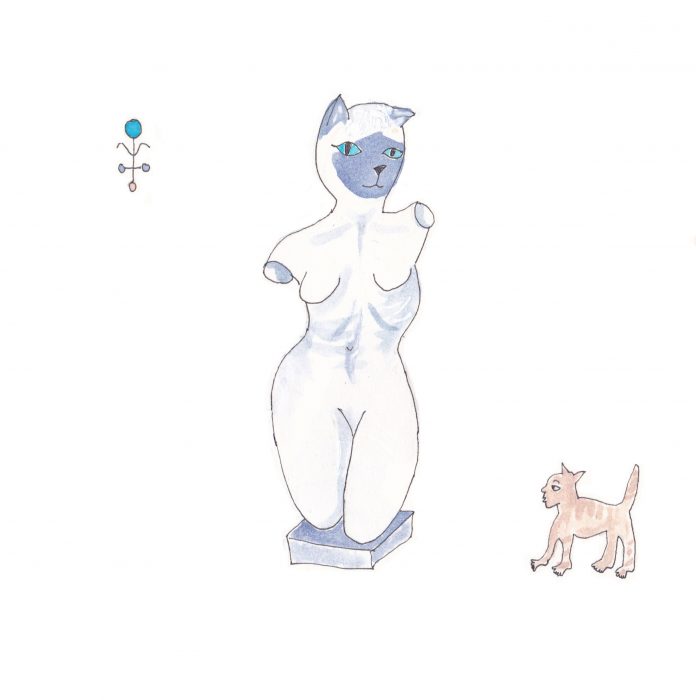
MF: Do you have any other projects coming up?
KR: Yes, I’m currently working to complete another book of poems, immersed in painting a sequence of new graphic poems, finishing a couple of visual reviews (forthcoming), and wrestling with an extended visual essay/comic; meanwhile, navigating coursework the pandemic has sent online, bottling hand sanitizer at the distillery I co-run, taking care of animals, planting a garden, and making stuff with my quarantined family. Happy to anticipate at least a bit of summer downtime upcoming.
Katrina Roberts is author of four books of poems (Underdog; Friendly Fire; The Quick; and How Late Desire Looks; and a chapbook Lace; as well as editor of the anthology: Because You Asked. Her graphic poetry manuscript LIKENESS was named finalist for the Pleiades Visual Poetry Series in 2019. Nominated for a Pushcart prize, and finalist for the New Alchemy Award, her graphic work appears in journals such as The Ilanot Review, Poetry Northwest, The American Journal of Poetry, Indianapolis Review, Permafrost, Thrush Poetry Journal, and various anthologies. She writes and draws in Walla Walla, Washington, where she teaches and curates the Visiting Writers Reading Series at Whitman College, and co-runs the Walla Walla Distilling Company. (www.katrinaroberts.net)
